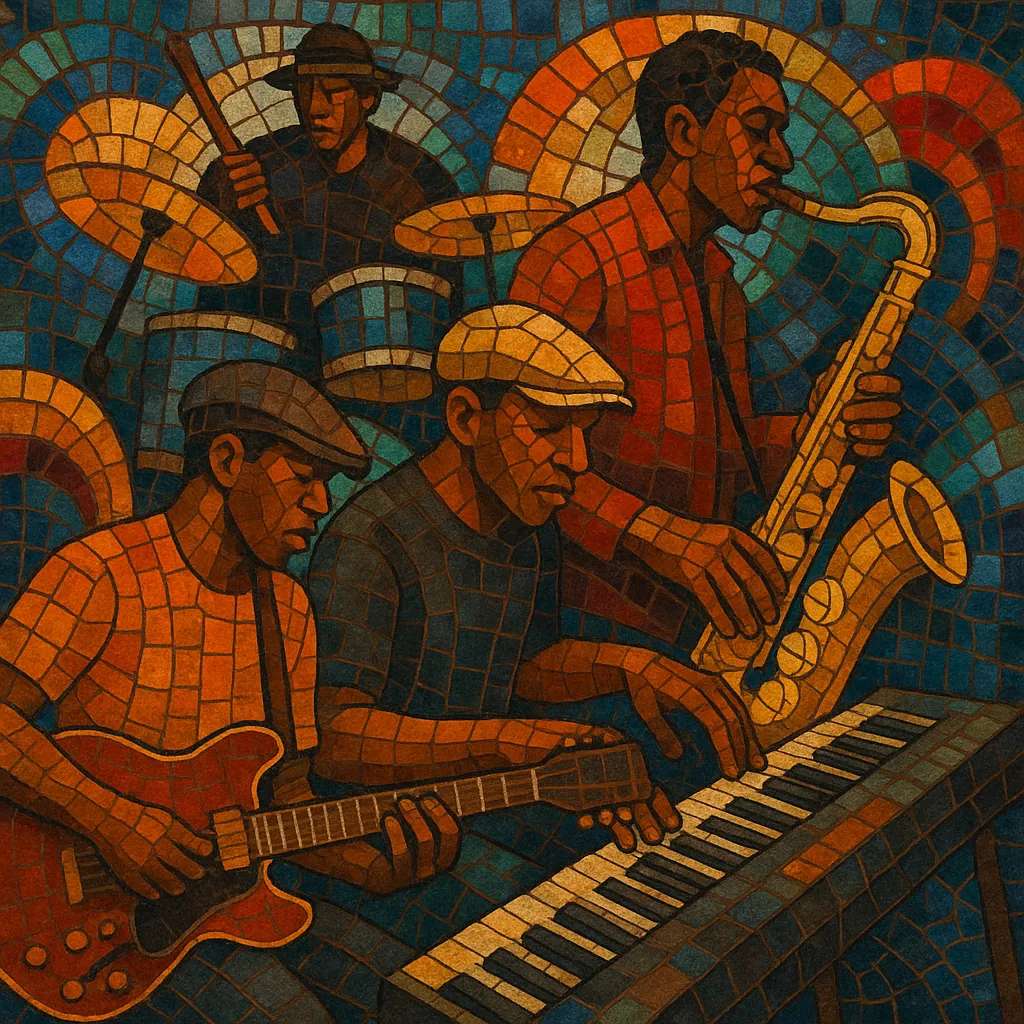Jazz-funk is a groove-forward hybrid of jazz improvisation and harmony with the rhythmic drive and backbeat of funk. It features syncopated basslines, crisp drum patterns, and tight horn or keyboard riffs, often organized around vamping two- or four-bar progressions rather than complex chord changes.
The sound is defined by electric instruments—Fender Rhodes, Clavinet, analog and early digital synthesizers, electric bass, and wah-inflected guitar—alongside punchy horn sections and extended solos. Compared to traditional jazz, the harmonic language is leaner but still rich, emphasizing 9ths, 11ths, 13ths, and modal centers (especially Dorian). The music aims for deep, danceable pocket, slick production, and a soulful, urban feel.
Jazz-funk emerged in the United States as jazz players absorbed the new rhythmic language of funk and late-1960s soul. Electric keyboards, electric bass, and amplified guitars became central, while drummers adopted tight, backbeat-driven grooves and 16th‑note hi-hat patterns. Early signposts include jazz bandleaders and session players who began favoring vamp-based compositions and streamlined harmonies to spotlight rhythm and timbre.
By the mid-1970s, artists such as Herbie Hancock, Roy Ayers, Donald Byrd, The Crusaders, and The Headhunters defined the idiom with albums that paired memorable riffs and deep pocket with jazz solos and lush production. Labels and studios embraced the slick, radio-friendly sheen, and jazz-funk interacted with disco and boogie scenes while remaining improvisation-friendly. Horn sections, clavinet ostinatos, and syncopated bass became genre trademarks.
As disco, boogie, and early hip hop rose, jazz-funk grooves and textures were sampled and recontextualized. Smooth jazz absorbed its polish and relaxed funk cadence, while club culture favored its mid-tempo swagger. Session musicians who cut their teeth in jazz-funk became key figures across pop, R&B, and soundtrack work.
In the 1990s, acid jazz and jazz rap explicitly revived and sampled jazz-funk classics, connecting crate-digging culture to contemporary production. Neo soul further internalized its warm harmonies and live-band feel. Today, the style persists both as a repertoire for bands and as a production aesthetic—tight rhythm sections, Rhodes-centric voicings, and horn hooks—informing modern funk, hip hop, and nu jazz.


